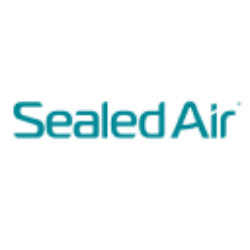
Consumer Cyclical -
Packaging & Containers - NYSE - US
$ 45.83
-0.629 %
$ 24.2 B
Market Cap
39.17
P/E
1. INTRINSIC VALUE
Balance Sheet
International Paper Company
| Current Assets | 6.42 B |
| Cash & Short-Term Investments | 1.17 B |
| Receivables | 3.36 B |
| Other Current Assets | 1.89 B |
| Non-Current Assets | 16.4 B |
| Long-Term Investments | 2.49 B |
| PP&E | 10.1 B |
| Other Non-Current Assets | 3.79 B |
| Current Liabilities | 4.26 B |
| Accounts Payable | 2.32 B |
| Short-Term Debt | 193 M |
| Other Current Liabilities | 1.75 B |
| Non-Current Liabilities | 10.4 B |
| Long-Term Debt | 5.66 B |
| Other Non-Current Liabilities | 4.71 B |
EFFICIENCY
Earnings Waterfall
International Paper Company
| Revenue | 18.6 B |
| Cost Of Revenue | 13.4 B |
| Gross Profit | 5.24 B |
| Operating Expenses | 3.38 B |
| Operating Income | 812 M |
| Other Expenses | 255 M |
| Net Income | 557 M |
RATIOS
FREE CASH FLOW ANALYSIS
Free Cash Flow Analysis
International Paper Company
| Net Income | 557 M |
| Depreciation & Amortization | 1.3 B |
| Capital Expenditures | -921 M |
| Stock-Based Compensation | 0 |
| Change in Working Capital | -10 M |
| Others | -53 M |
| Free Cash Flow | 757 M |
Wall Street Analysts Price Targets
International Paper Company
Wall Street analysts predict an average 1-year price target for IP of $55.9 , with forecasts ranging from
a
low of
$45 to a high of $66 .
IP Lowest Price Target
Wall Street Target
45 USD
-1.81%
IP Average Price Target
Wall Street Target
55.9 USD
21.92%
IP Highest Price Target
Wall Street Target
66 USD
44.01%
4. DIVIDEND
ANALYSIS
1.05%
DIVIDEND YIELD
0.463 USD
DIVIDEND PER SHARE
5. COMPETITION
slide 2 of 9
6. Ownership
Insider Ownership
International Paper Company
Sold
0-3 MONTHS
336 K USD 1
3-6 MONTHS
0 USD 0
6-9 MONTHS
159 K USD 1
9-12 MONTHS
957 K USD 4
Bought
0 USD 0
0-3 MONTHS
0 USD 0
3-6 MONTHS
0 USD 0
6-9 MONTHS
0 USD 0
9-12 MONTHS
7. News
New June Fortune 500 Industry Leaders Show 3 Ideal "Safer" Dividend Buys
Three Fortune 500 Industry Leaders—Energy Transfer, Verizon, and World Kinect—currently meet the 'dogcatcher' ideal of fair price and safer dividends. Analyst targets project 21% to 50% net gains for the top ten F500IL dividend dogs by June 2026, with average gains of 28.8%. Most top-yielding F500IL stocks remain overpriced, but a 60% market correction or dividend increases could make all ten fairly priced for income investors. Twelve F500IL stocks have negative free cash flow margins, making them unsafe for dividends; focus on the three 'safer' fair-priced options for now.
seekingalpha.com
- 1 week ago
Soleno Therapeutics Announces Multiple Presentations at the 2025 United in Hope: International Prader-Willi Syndrome Conference
Conference is the first-ever international meeting jointly hosted by the Prader-Willi Syndrome Association | USA, the Foundation for Prader-Willi Research, and the International Prader-Willi Syndrome Organisation Conference is the first-ever international meeting jointly hosted by the Prader-Willi Syndrome Association | USA, the Foundation for Prader-Willi Research, and the International Prader-Willi Syndrome Organisation
globenewswire.com
- 1 week ago
International Paper Shares Are Not Reflecting Ongoing Self-Help Measures
International Paper's ongoing cost-cutting and facility rationalization post-DS Smith acquisition position it for outsized profitability despite sector-wide macro headwinds. Current financials are messy due to restructuring, but margin expansion and improved sales execution signal underlying operational progress and future self-help upside. Free cash flow is temporarily depressed by one-time integration costs, but management guidance and cost improvements support a strong rebound in 2025 and beyond.
seekingalpha.com
- 3 weeks ago
IP Eyes Salt Lake City to Build New Sustainable Packaging Facility
International Paper eyes Salt Lake City for a new high-tech sustainable packaging plant, expanding its U.S. manufacturing footprint.
zacks.com
- 3 weeks ago
International Paper to Explore Building a New State-of-the-Art Sustainable Packaging Facility in Salt Lake City, Utah
MEMPHIS, Tenn. , June 3, 2025 /PRNewswire/ -- International Paper (NYSE: IP; LSE: IPC), a global leader in sustainable packaging, today announced the strategic exploration of a new sustainable packaging facility in Salt Lake City, Utah.
prnewswire.com
- 3 weeks ago
Hitachi Digital Services Partners with DS Smith to transform its Integration Platform to Drive Digital Innovation
DALLAS , May 29, 2025 /PRNewswire/ -- Hitachi Digital Services, the digital consultancy and technology services subsidiary of Hitachi, Ltd. (TSE: 6501), announced a strategic partnership with DS Smith to modernize its integration platform and accelerate digital transformation.
prnewswire.com
- 4 weeks ago
International Paper to close 5 sites in UK, putting 300 jobs at risk
International Paper said on Friday it will close five packaging sites in Britain, cutting around 300 jobs, citing tough industry conditions.
reuters.com
- 1 month ago
Jimmy Bullock Receives the Dr. Sharon Haines Memorial Award for Innovation and Leadership in Sustainability
MINNEAPOLIS, May 21, 2025 (GLOBE NEWSWIRE) -- The Sustainable Forestry Initiative (SFI) and International Paper, a global leader in sustainable packaging solutions, are proud to announce the recipient of the 2025 Dr. Sharon Haines Memorial Award for Innovation and Leadership in Sustainability. Jimmy Bullock, Senior Vice President, Forest Sustainability at Resource Management Service, LLC (RMS), was presented with the award at the SFI Annual Conference in Minneapolis, Minnesota, for his lifelong dedication to collaborative conservation and sustainable forest management.
globenewswire.com
- 1 month ago
International Paper Is on a Quest to Build a Better Cardboard Box
Andy Silvernail was looking for a business that needed to be transformed in a big way when he agreed to lead the 127-year-old company.
wsj.com
- 1 month ago
International Paper Declares Quarterly Dividend
MEMPHIS, Tenn. , May 13, 2025 /PRNewswire/ -- International Paper (NYSE: IP; LSE: IPC) today declared a quarterly dividend of $0.4625 per share for the period from April 1, 2025, to June 30, 2025, inclusive, on the common stock, par value $1.00, of the Company, payable on June 13, 2025, to holders of record at the close of business on May 23, 2025.
prnewswire.com
- 1 month ago
International Paper Announces Facility Alignment in the Rio Grande Valley as Part of Strategic Growth Initiative in North America
MEMPHIS, Tenn., May 9, 2025 /PRNewswire/ -- International Paper (NYSE: IP; LSE: IPC) today announced the consolidation of its operations in the Rio Grande Valley to better serve customers.
prnewswire.com
- 1 month ago
International Paper Celebrates the Groundbreaking of Greenfield Packaging Facility in Waterloo, Iowa
MEMPHIS, Tenn. , May 2, 2025 /PRNewswire/ -- International Paper (NYSE: IP; LSE: IPC), a global leader in sustainable packaging, is proud to announce the groundbreaking of its new state-of-the-art sustainable, packaging box plant in Waterloo, Iowa.
prnewswire.com
- 1 month ago
8. Profile
Summary
International Paper Company IP
COUNTRY
US
INDUSTRY
Packaging & Containers
MARKET CAP
$ 24.2 B
Dividend Yield
1.05%
Description
International Paper Company operates as a packaging company primarily in United States, the Middle East, Europe, Africa, Pacific Rim, Asia, and rest of the Americas. It operates through two segments: Industrial Packaging and Global Cellulose Fibers. The Industrial Packaging segment manufactures containerboards, including linerboard, medium, whitetop, recycled linerboard, recycled medium, and saturating kraft. The Global Cellulose Fibers segment provides fluff, market, and specialty pulps that are used in absorbent hygiene products, such as baby diapers, feminine care, adult incontinence, and other non-woven products; tissue and paper products; and non-absorbent end applications, including textiles, filtration, construction material, paints and coatings, reinforced plastics, and other applications. It sells its products directly to end users and converters, as well as through agents, resellers, and paper distributors. The company was founded in 1898 and is headquartered in Memphis, Tennessee.
Contact
6400 Poplar Avenue, Memphis, TN, 38197
https://www.internationalpaper.com
IPO
Date
Jan. 2, 1970
Employees
65000
Officers
Mr. Lance T. Loeffler
Senior Vice President & Chief Financial Officer
Mr. Timothy S. Nicholls
Executive Vice President & President of DS Smith
Ms. Sophie N. Beckham
Vice President & Chief Sustainability Officer
Michael H. Anderson
Vice President & Chief Information Officer
Ms. Joy N. Roman
Senior Vice President and Chief People & Strategy Officer
Mr. Clay R. Ellis
Senior Vice President of Global Cellulose Fibers & IP Asia
Mr. Andrew K. Silvernail
Chief Executive Officer & Chairman
Mr. Errol A. Harris
Vice President & Treasurer
Mr. William Thomas Hamic
EVice President & President of North American Packaging Solutions
Mr. Joseph R. Saab
Senior Vice President, General Counsel & Corporate Secretary










